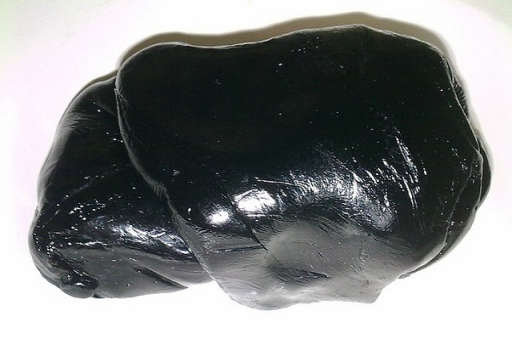Liver is a vital organ that detoxifies the body. Shilajit is a natural therapy that has recently gained popularity as a way to improve liver health.
Table of Contents
Shilajit and Liver Health: Amazing Remedy to Help Detoxification and Liver Function
Shilajit is a sticky, resin-like material that pours from Himalayan rocks during the summer months. It occurs over time as a result of plant waste and mineral breakdown. Shilajit is well-known for its adaptogenic properties and has been used in traditional medicine for its numerous health benefits. It has a high concentration of biologically active substances such as fulvic acid, humic acid, and several minerals.
Liver Function and Detoxification
The liver is necessary for detoxification because it filters and eliminates toxins from the body. It also metabolizes drugs, alcohol, and other chemicals. Toxins can build up in the liver over time, resulting in liver damage and other health issues. Supporting liver function and aiding detoxification are essential for liver health and well-being.
Shilajit and Liver Function
Shilajit may have hepatoprotective properties, which means it may protect the liver from toxins and oxidative stress, according to studies. Shilajit has been shown in trials to aid in the reduction of liver enzyme levels, which are markers of liver impairment. It may also help boost antioxidant defenses in the liver, reducing oxidative stress and inflammation.
Potential Mechanisms of Shilajit
Shilajit’s beneficial effects on liver function may be attributed to bioactive molecules. Fulvic acid, a fundamental component of shilajit, has been proven to have antioxidant and anti-inflammatory properties. It can scavenge free radicals and reduce oxidative stress, sparing liver cells from damage. Furthermore, shilajit may raise the activity of liver enzymes involved in detoxification processes, thereby increasing the body’s ability to remove toxins.
While more research is needed to fully understand the mechanisms of shilajit’s effect on liver health, several trials have yielded promising results. In rat research, shilajit supplementation was found to prevent liver damage caused by alcohol usage. Another study on rats with hazardous compound-induced liver injury discovered that shilajit therapy improved liver function while decreasing oxidative stress indicators.
Causes of Fatty Liver
A fatty liver can be caused by a variety of factors, including lifestyle choices, underlying medical conditions, and hereditary vulnerability.
Nutritional deficiencies
A diet high in saturated fats, trans fats, refined carbohydrates, and added sugars can all contribute to a fatty liver. Poor dietary habits might lead to fat accumulation in the liver.
Obesity and metabolic syndrome
Obesity and being overweight are strongly associated with a fatty liver. Excess weight, especially around the midsection, increases the risk of having a fatty liver. Obesity, high blood pressure, high cholesterol, and insulin resistance are all factors that lead to metabolic syndrome, which increases the risk of fatty liver. Alcohol’s harmful effects on liver cells result in fat accumulation and inflammation, leading to alcoholic fatty liver disease.
Diabetes Type 2 with Insulin Resistance
Insulin resistance, a condition in which the body’s cells become less receptive to insulin, can result in a fatty liver. It frequently occurs in patients who have type 2 diabetes or other metabolic issues.
Medications
Corticosteroids, methotrexate, tamoxifen, and antiretroviral medications used in HIV treatment can all contribute to fatty liver formation.
Rapid Weight Loss
Fat accumulation in the liver may result from rapid weight loss or crash dieting. This is known as acute fatty liver of pregnancy (AFLP) or starvation-induced fatty liver in pregnant women.
Genetics
Some people may be susceptible genetically to developing fatty livers. Certain genetic disorders can affect how the body absorbs lipids and contribute to the accumulation of liver fat.
Other medical concerns
Hepatitis C, Wilson’s disease (a hereditary aberration affecting copper metabolism), and certain inherited metabolic abnormalities can also produce fatty livers.
The most common type of liver health disturbance is fatty liver disease is non-alcoholic fatty liver disease (NAFLD), which is usually associated with obesity, insulin resistance, and metabolic syndrome. However, fatty liver can develop in people who are not obese or who do not have these risk factors.
Symptoms of a Fatty Liver
In the early stages of fatty liver disease, there are usually no visible symptoms. Individuals may have a variety of symptoms as the illness progresses or if complications emerge. Here are some of the most common symptoms of a bad liver health:
Fatigue
It is a common symptom of a fatty liver, as is a general feeling of exhaustion. Poor liver health may have an impact on energy metabolism and produce fatigue. Some people with fatty livers may have pain or discomfort in the upper right side of their abdomen. This could be caused by inflammation or enlargement of the liver.
Appetite or weight loss
In certain people, a fatty liver might result in unintentional weight loss or a loss of appetite. This could be due to liver health disturbance like inflammation or metabolic issues. People with fatty livers may have widespread weakness or a feeling of weakness throughout their bodies. This is because the liver’s ability to store and release energy is compromised.
Jaundice
In rare cases, fatty liver can progress to non-alcoholic steatohepatitis (NASH), a liver inflammation and damage illness. Jaundice, or skin and eye yellowing, can occur in the final stages of liver health disease. a fluid accumulation in the abdominal cavity known as ascites. It is caused by severe fatty liver disease and is frequently accompanied by abdominal enlargement and discomfort.
Liver Enlargement
In some cases, the liver may swell, giving a feeling of fullness or heaviness in the upper right side of the belly. Shilajit’s liver enzyme results revealed that his ALT and AST levels have significantly decreased. Shilajit and pioglitazone therapy also addressed elevated MDA levels, increased GPx activity, and decreased SOD activity.
Shilajit treatment significantly reduced AST and ALT levels, TG, TC, LDL, hyperglycemia, liver weight, and steatosis while boosting HDL (p 0.05). When compared to the vehicle group, Shilajit medication also reduced the unfavorable effects of HFD-induced histological abnormalities in the liver (p 0.001). MDA and GPx activity were higher in the vehicle group but lower in the control group (p 0.05). Shilajit improved the histological NAFLD changes in the liver health, demonstrating Shilajit’s potential as a strong NAFLD therapy medication.
Dosage and precautions
It’s important to realize that the quality and potency of shilajit pills vary. It is advisable to use a well-known brand and follow the dose instructions exactly for liver health maintenance. Contact a healthcare practitioner before commencing shilajit supplementation, as with any supplement, especially if you have any underlying health concerns or are on drugs.
Is Shilajit good for the liver?
Shilajit has anti-inflammatory, antioxidant, memory-enhancing, and anti-asthmatic properties, as well as the potential to improve heart and liver health. Shilajit may thus be a valuable Ayurvedic health supplement.
If your liver isn’t functioning properly, it’s likely that your health isn’t either. Only 25% of your liver is capable of developing into a fully functional replacement liver. Given that high-quality shilajit has been scientifically proven to regenerate biological tissues at 3–4 times the typical rate.
Liver Detoxification Steps
Most of the environmental toxins are fat-soluble, the liver detoxifies in two steps. The first involves oxidizing the toxin to make it water-soluble. The second phase is conjugation, in which the toxin is mixed by the liver with sulfur, amino acids, or organic acids and then expelled via bile. A lack of either step of detoxification could be harmful to your health. Alcohol, cigarettes, low-quality vegetable oils, painkillers, and a protein deficiency can all stall the liver’s cleansing function. Consume a wide range of foods, including fresh fruits and vegetables (especially cruciferous and alliums), high-quality protein sources, and shilajit.
Minerals such as selenium (found in Brazil nuts) and magnesium play a vital role, because they serve as building blocks for your body’s endogenous antioxidants, glutathione peroxidase and superoxide dismutase. This treatment will provide your liver health with all of the resources it needs to battle toxins. Shilajit can help you get the most out of your liver-cleansing herbs or juice by simply popping a pinch into your mouth. Shilajit will accelerate the desired compounds in your food and give you the greatest bang for your buck, in addition to being a heavy metal chelator and thorough detoxifier in and of itself.
Shilajit Powder supports kidney health by providing consistent and optimal performance. It achieves this by assisting in the normal clearance of body toxins that collect inside the tract on a regular basis. As a result, it improves the general health of the urinary system.
Conclusion
Shilajit, an ancient Himalayan medication, may be beneficial to liver health. Its bioactive components, such as fulvic acid, have been shown to be hepatoprotective and aid in liver detoxification. While further research is needed to fully understand the mechanisms and dosage recommendations, shilajit appears to be a promising natural medicine for improving general well-being and sustaining liver health. Consult with a healthcare professional before beginning any new supplement programmed.

